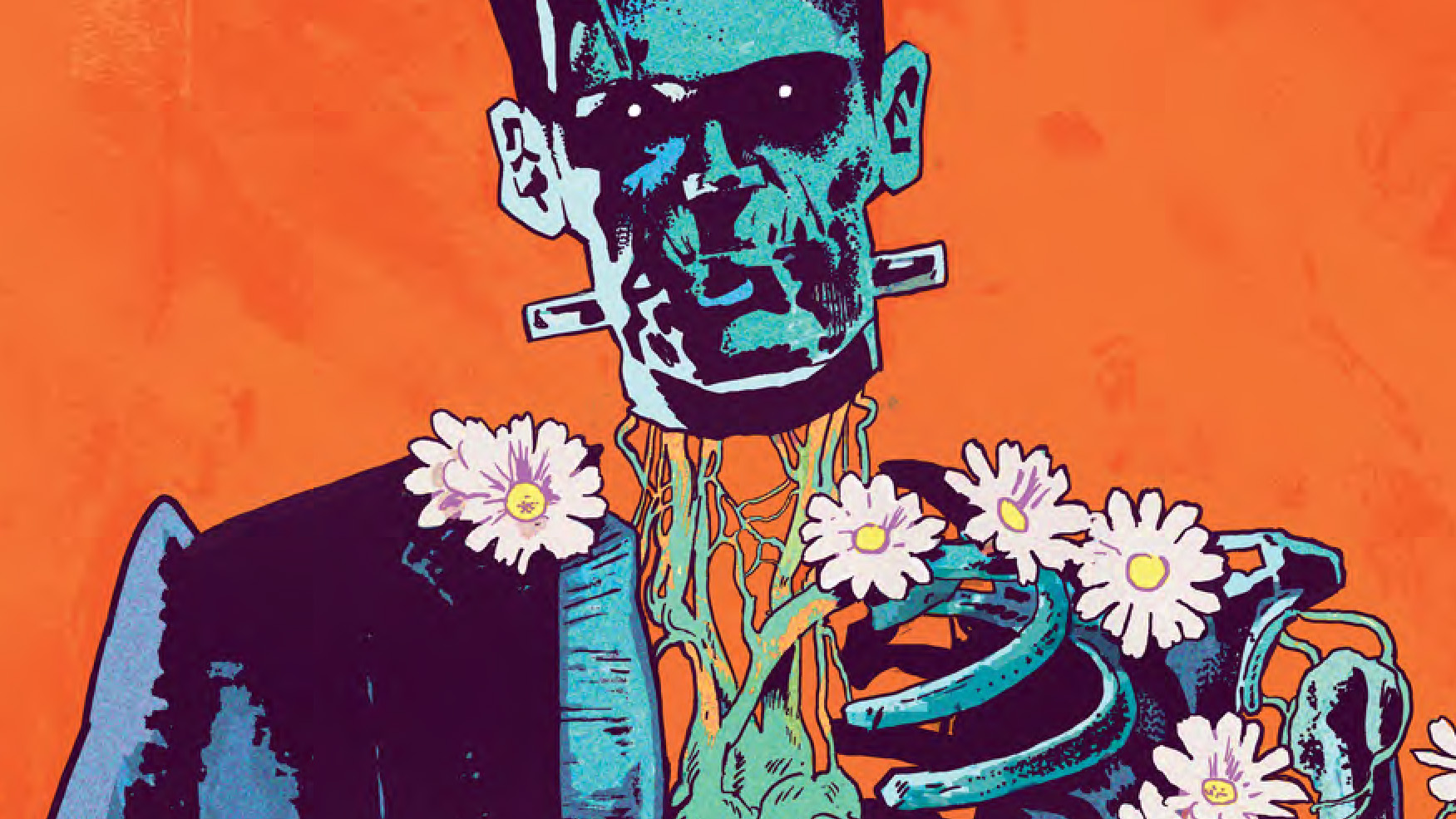
There are few novels more impactful than Frankenstein. Mary Shelley's 1818 gothic masterpiece is both a horror masterpiece and is often credited as the first ever science fiction novel. It has also inspired countless retellings in the 206 years since it was originally published, including James Whale's 1931 big screen classic starring Boris Karloff. That movie was the first of a whole franchise of Franken-films at Universal Pictures. Now, with Skybound successfully bringing the wider Universal Monsters franchise to comics, Frankenstein's monster is alive once more.
Universal Monsters: Frankenstein is a new four-issue limited series from writer and artist Michael Walsh and colorist Toni-Marie Griffin, and their atmospheric work here offers a fresh take on the material. Newsarama caught up with Walsh to find out more about how this terrifying adaptation came to be and if there are any other Universal monsters he's keen to revive.
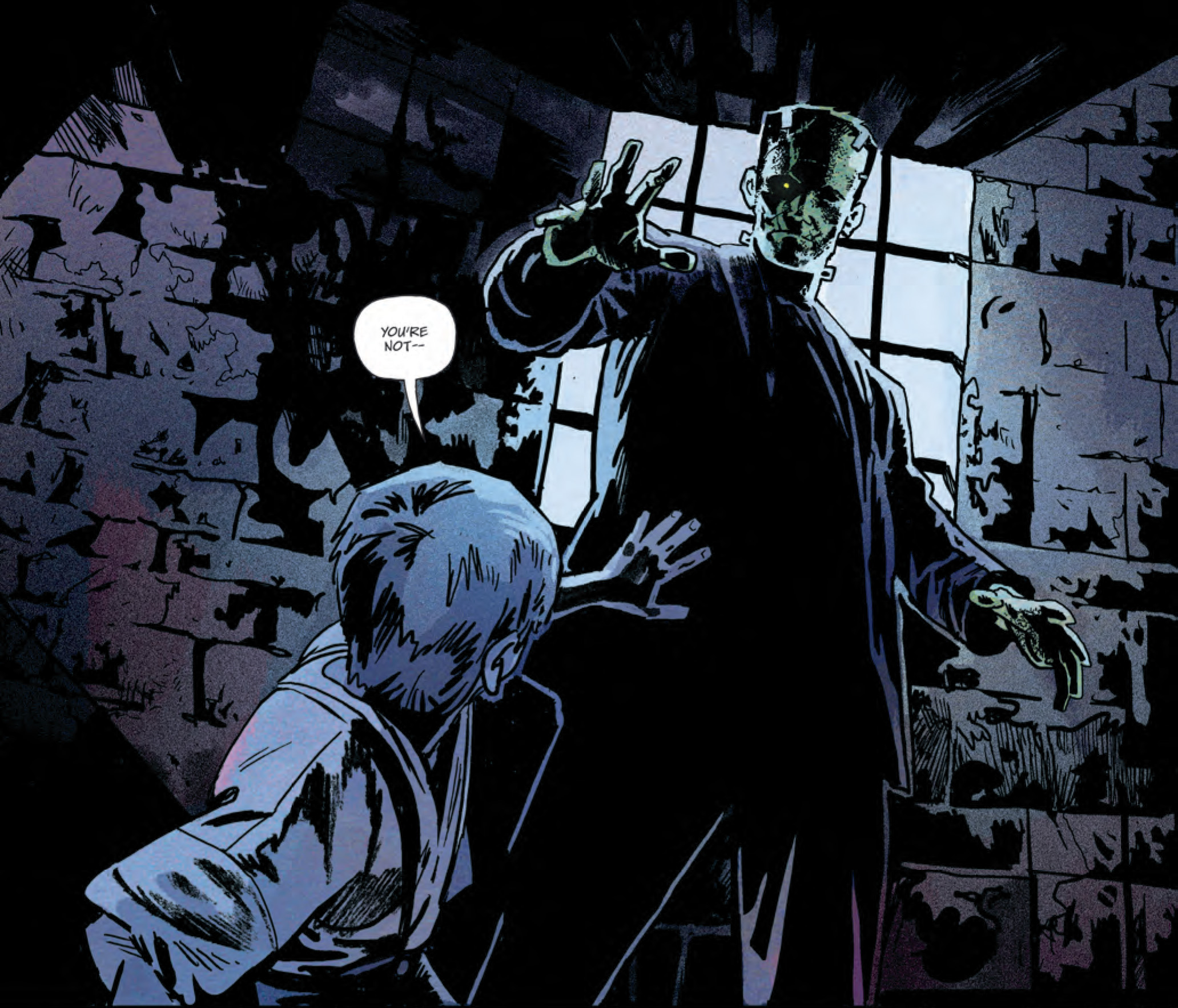
Newsarama: So Michael, let's start with your own history with Frankenstein. Are you a long-time fan?
Michael Walsh: I'm a huge fan. I think the original 1931 movie has some incredible set pieces and shots and framing, and really it's just such an iconic film. But even before that I think that Mary Shelley's Frankenstein is one of the greatest horror novels of all time. It really was such a pivotal book and it paved the way for a lot of what we see now in terms of horror and sci-fi. So I was just really excited to be able to bring in some of the complexity and themes from the novel, but still be able to use that iconic imagery from the film.
The original novel is over 200 years old and the first Universal Frankenstein is almost 100. Why has this story remained so resonant?
I just think that the themes are really timeless. I mean there's a lot going on in the book and in the movies. There's the idea that ambition can kind of push away the things that are really important, you know, the balancing of work life and family life. And then the idea that if you make a mistake that it will always come back to haunt you unless you take accountability for it. There are so many things about it that are relevant to today's culture and the way that society works right now. I think that these themes will always be timeless.
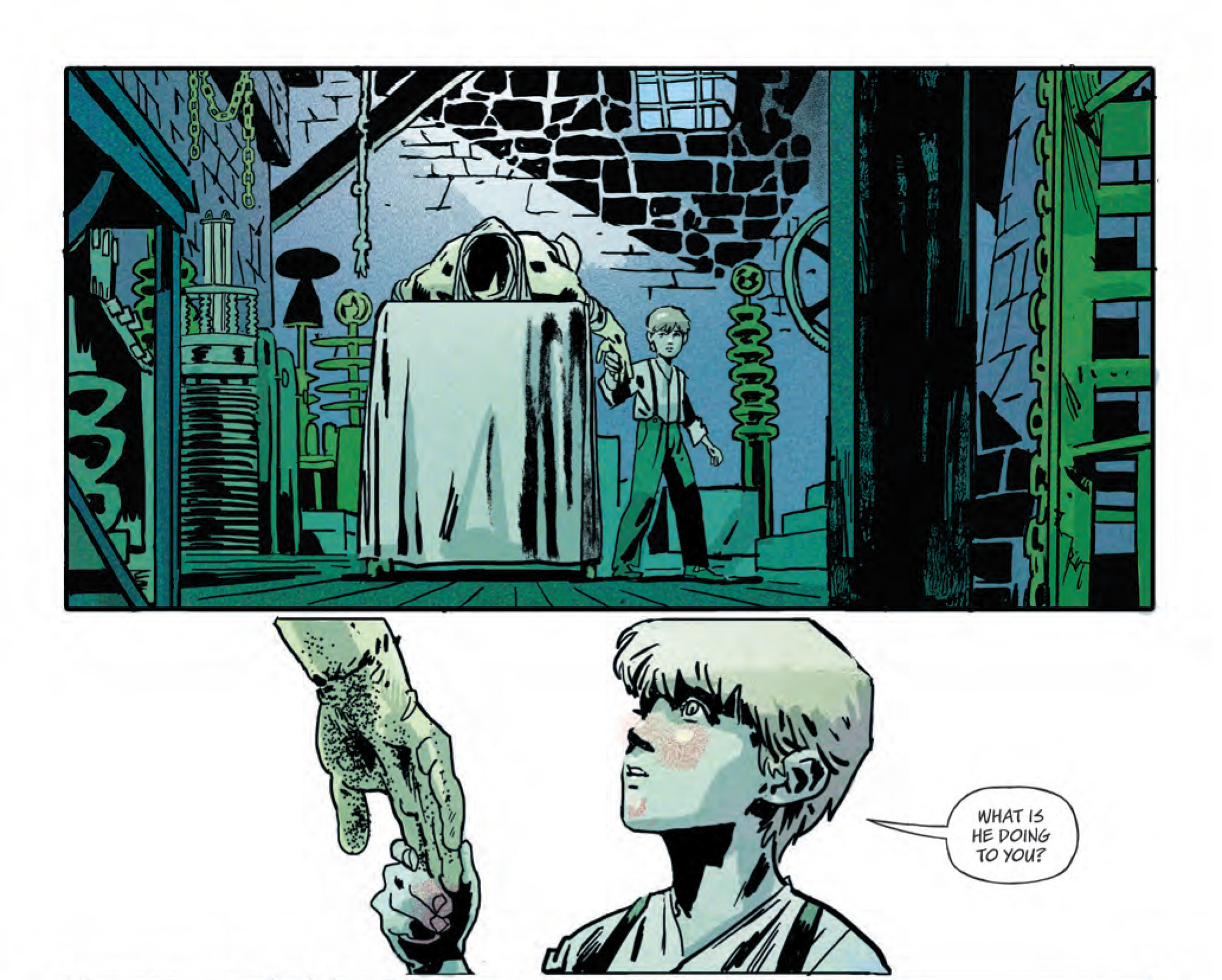
What can you tease about this telling of the story? How would you describe your take on Frankenstein?
In this version I wanted to introduce a new character to the Frankenstein mythology who's not in either the movies or the book, and have them be one of the key point of view characters. It allowed me to have a little bit of creative freedom and to create a sense of tension. Having some new characters let's there be some stakes and some unpredictability to the storytelling. So that was one of the important things to me. I still wanted to be able to show some of the iconic moments from the movie, so it was a bit of a balancing act of introducing fresh ideas while still being very reverent of what people love about Frankenstein, and especially the Universal Monsters version of that character.
The series has a distinct format. Each issue is themed around a different body part. What can you tell us about that?
So there's four issues and each one – it won't focus completely on that body part, but it will be an integral part of the storytelling. So it starts off with the hands of the Father, and then we move into the brain of a killer, and then the heart of a lover. And finally the last issue focuses on the eyes of a monster. And we've got Paul, who's introduced in the first issue, as a through line, but then each issue is going to focus on a different character that I felt as a viewer of the original film was a bit under-explored. So the second issue we're going to see a lot of Fritz. And then the third issue is a lot of Elizabeth, who is Frankenstein's fiancé from the movie.
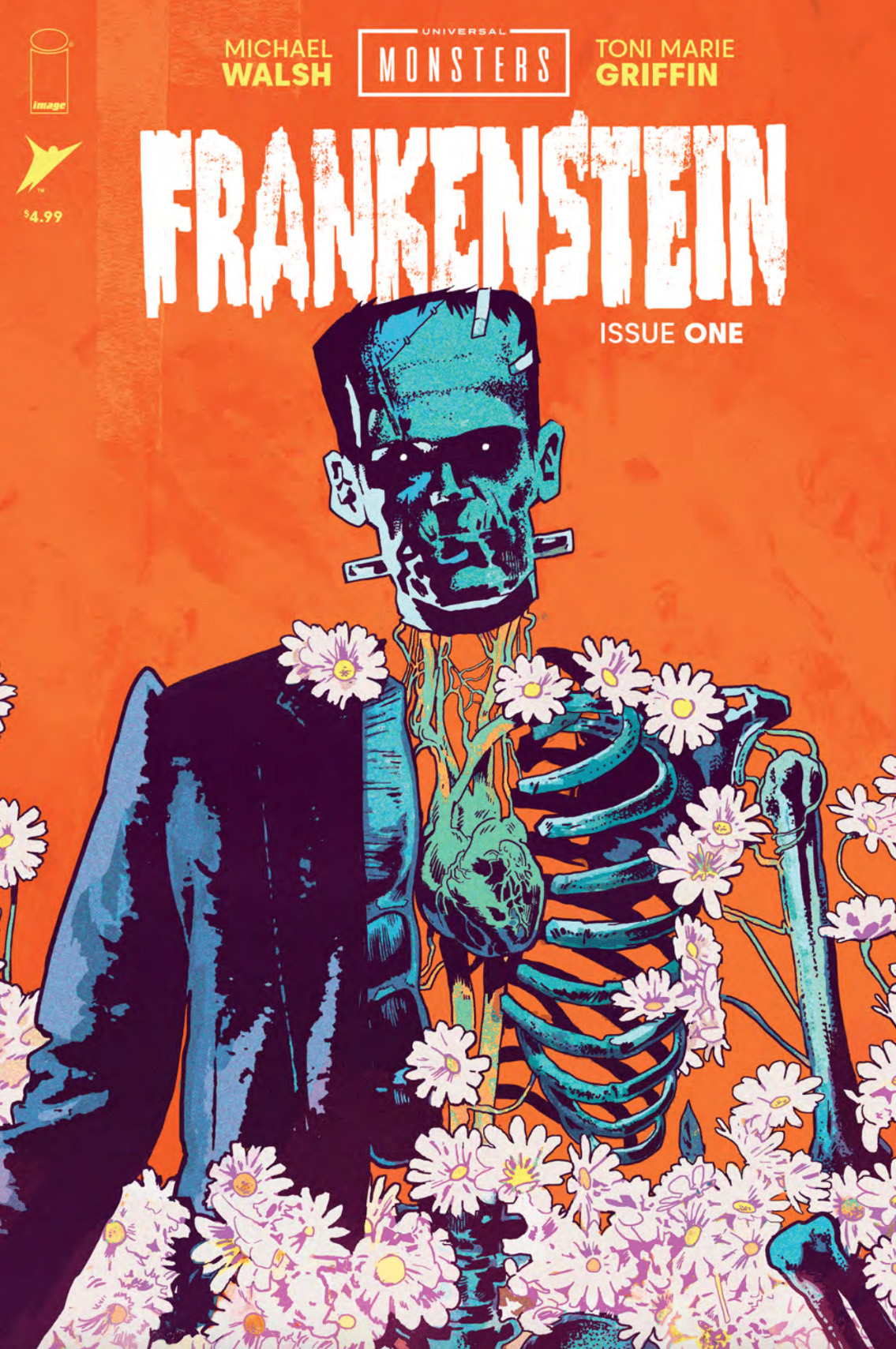
What were some of the unique challenges with this series?
This isn't an adaptation of the movie – it's more of a companion piece to the film. You could watch the movie and then read the comic and I think it would enrich both. A lot of what's happening in the comic is happening in between the scenes of the film, or just slightly off camera. So I had to watch the movie quite literally hundreds of times to make sure that everything lined up and that I wasn't screwing around with the continuity of the film, or any of the lines, because I wanted all the dialogue from the movie to fit into the comic and to work with the new dialogue that I was introducing. There are a lot of points where the film would cut, but where I just keep the camera rolling and show more of what happened before or after that scene. I try to get into the heart of the characters that we don't see as much of in the movie.
You're working with Toni-Marie Griffin on this book. What does her coloring bring to your work?
She's fantastic. She's my partner and we work in the same same studio space and we've kind of developed a style and a way of working that's really symbiotic and really natural. It's really nice being in the same studio because I can tell her what my idea is for a scene even as I'm writing it sometimes, and then she'll look around at references for different light and color palettes and find ways to set that mood.
For Frankenstein she really went above and beyond what she's done so far. She put a lot of thought into the way that the palettes would reflect the mood of the scene and create a very specific atmosphere. And she also did kind of a palette map so that each scene will flow into the next scene in a really organic and interesting way. I can't wait for people to see what's going to be coming in the next few issues, because I think issue to issue, the tones are so different. They all feel different depending on the body part that that we're getting into the history of.
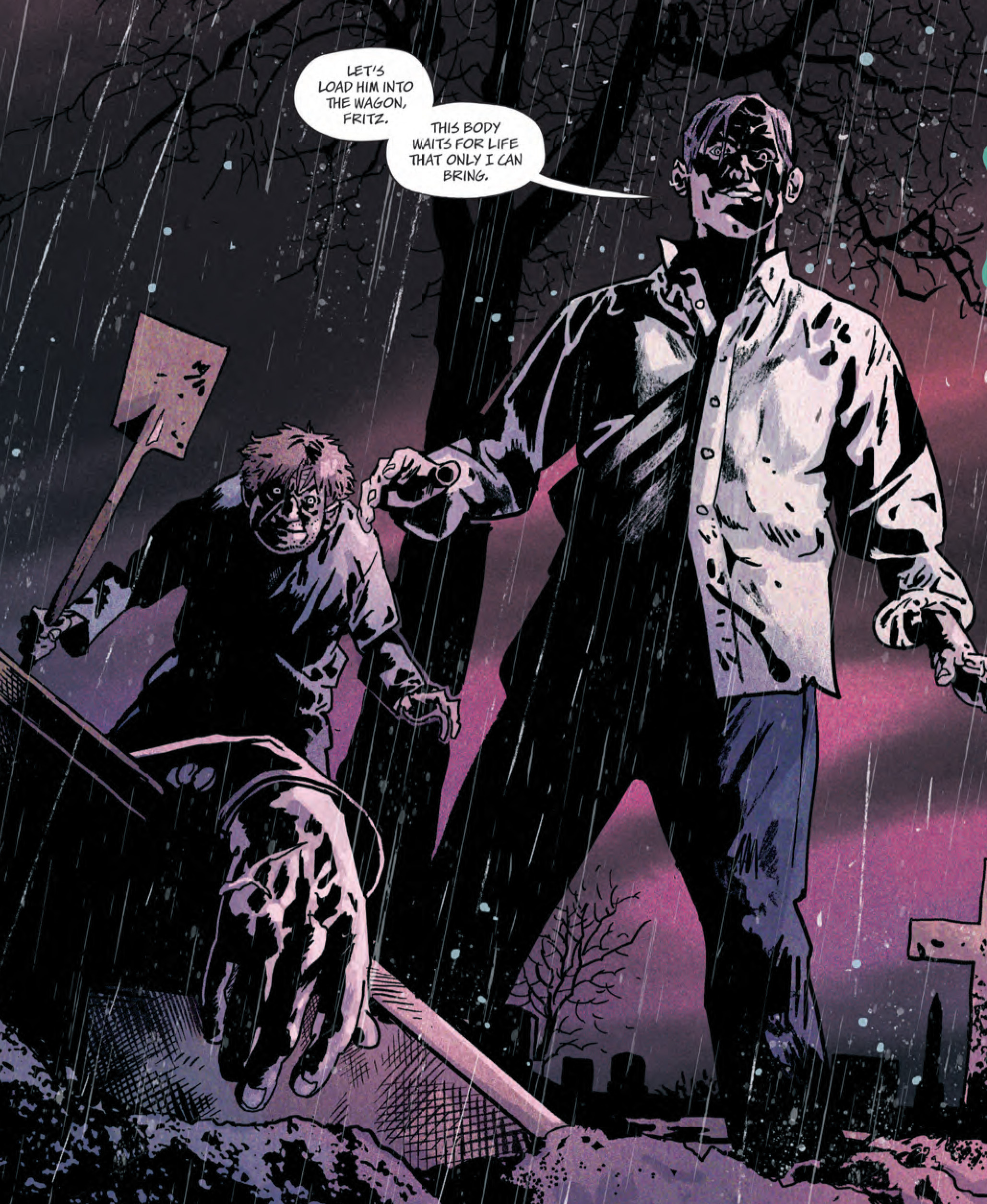
What was your research process for this? And did you look to any previous Frankenstein comics at all?
I stayed far away from other comic book adaptations. I mean, obviously Bernie Wrightson's Frankenstein stuff is just on another level and I don't think that anyone could ever touch the draftsmanship that he was able to accomplish. But I didn't want that to taint what I was doing with the book going in. I really wanted to try and do something a little bit different and not be subconsciously influenced by it. I just wanted to make decisions based on my own idea of what the movie could look like in the comic form. But I did watch a bunch of the film adaptations, and obviously re-read the book.
Are there any other classic monsters that you'd like to tackle, Universal or otherwise?
Geez, yeah. I mean all of them are really interesting. There are so many classics – there's Wolf Man, there's the Invisible Man... I feel like there's so much fruit that is ripe for the picking. I just love making horror comics and I'd be happy to try and tackle some other characters. I always think that there's an opportunity to do something cool with Jekyll and Hyde, even though I don't think there was a Universal Jekyll and Hyde movie. It would be cool to make a comic almost as if there had been one.
Universal Monsters: Frankenstein #1 is out now from Skybound. A new movie adaptation of Frankenstein starring Mia Goth is currently in development, but a release date has not yet been announced.
Get spooky with our picks for the best horror comic artists of all time.







